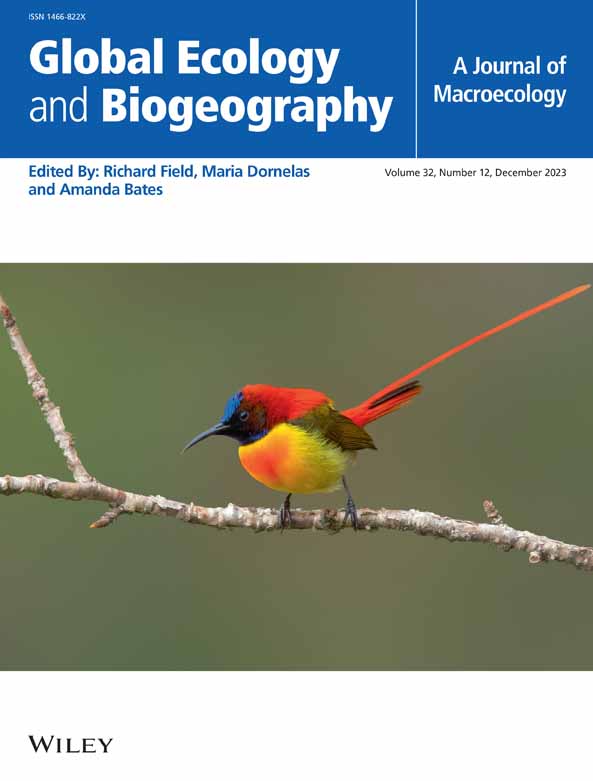Niche Structure Explains Amphibians' Responses to Habitat Alteration
Abstract
Aim
Despite global conservation efforts, the mechanisms underlying amphibians' sensitivity to habitat alteration (HA) remain poorly understood. One underexplored factor is the role of species' climatic niche structure, which comprises both niche volume and the distance of populations to the niche centroid, in shaping their responses to HA. Here, we present the first global assessment of how these components interact to influence amphibians' responses to HA. We hypothesize that species' responses to HA are shaped by the interaction between niche volume and distance of populations to the niche centroid.
Location
Global.
Time Period
Anthropocene.
Group
Amphibians.
Methods
Using a meta-analytical approach combined with macroecological GIS techniques, we conducted a global analysis of amphibian species. We integrated data on abundance changes in response to HA and climatic niche volume along with the distance of studied populations to the niche centroid.
Results
Our findings demonstrate that niche volume, in conjunction with distance to the niche centroid, is a strong predictor of species' responses to HA. Species with narrow niches exhibit higher vulnerability to HA, regardless of the climatic marginality of their populations. Conversely, species with broader niches show variable responses: marginal populations often decline, while populations near the centroid remain stable or thrive.
Main Conclusions
This study provides, for the first time, evidence of a global and strong relationship between climatic niche structure and species' responses to HA, consistent with patterns observed at smaller geographic and taxonomic scales. Critically, our analysis reveals the importance of considering the internal niche structure to understand this relationship, currently overlooked. Marginal populations, which generally exhibit low resilience, are particularly vulnerable to HA, and vice versa. These findings underscore the need to integrate niche structure into conservation strategies, emphasising the protection of populations with varied niche positions to enhance species adaptability and long-term persistence.


 求助内容:
求助内容: 应助结果提醒方式:
应助结果提醒方式:


